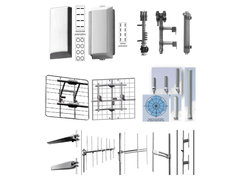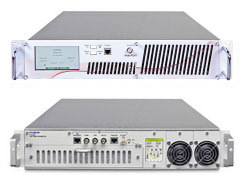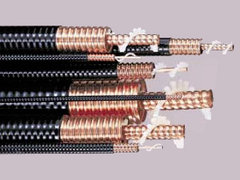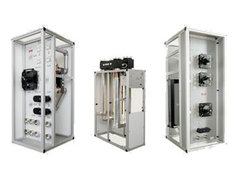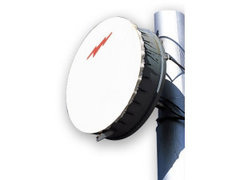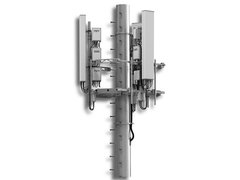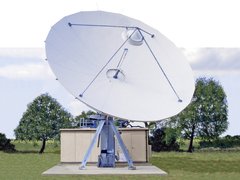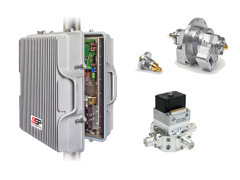Combiners

Multichannel Combiners
In order for multiple transmitters to broadcast via a shared antenna, it is necessary to connect the transmitter outputs using a combiner so that they can't interfere with one another (isolation), and to route all of the RF power to the antenna (insertion loss). Bandpass filters or phase-adjusted transmission lines are used to set the frequencies in the combiners. The bandpass filters can also be used to suppress spurious emissions (with integrated mask filtering for DTV, DAB, T-DMB etc.).
Starpoint and Manifold Combiners
Transmitters can be isolated from each other by connecting a bandpass filter to each output. To achieve good matching for the operating channels, the outputs of these filters must be connected via a suitable matching network. It's important to keep in mind that this system will exhibit a total mismatch outside the operating channels, due to total reflection by the bandpass filters. Frequency changes or extensions are difficult to accomplish with combiners of these kinds, because the matching networks have to be optimized for the new frequencies.
Constant Impedance Broadband (CIB) Combiners
Good isolation, broadband matching and easy modification can be achieved in the CIB combiner with a combination of bandpass filters and 3 dB couplers.
The signal applied to the narrowband input is fed via the narrowband 3 dB coupler into the two bandpass filters, then recombined afterwards in the wideband 3 dB coupler and routed to the antenna output.
The signals fed into the wideband input arrive at the filter ports via the wideband 3 dB coupler, which totally reflects them back to the wideband coupler. They are then routed to the antenna output.
All of the ports are broadband-matched (yielding constant impedance across a broad band).
Any transmitter signal can be fed into the wide-band input as long as the frequency spacing across the filters' pass-band range is large enough to ensure total reflection. Even adjacent channels can be combined if the slopes of the filter curves are steep enough. CIB combiners are the preferred components for designing multichannel combiners because they provide the greatest flexibility for configuring channels and power levels.
The signal applied to the narrowband input is fed via the narrowband 3 dB coupler into the two bandpass filters, then recombined afterwards in the wideband 3 dB coupler and routed to the antenna output.
The signals fed into the wideband input arrive at the filter ports via the wideband 3 dB coupler, which totally reflects them back to the wideband coupler. They are then routed to the antenna output.
All of the ports are broadband-matched (yielding constant impedance across a broad band).
Any transmitter signal can be fed into the wide-band input as long as the frequency spacing across the filters' pass-band range is large enough to ensure total reflection. Even adjacent channels can be combined if the slopes of the filter curves are steep enough. CIB combiners are the preferred components for designing multichannel combiners because they provide the greatest flexibility for configuring channels and power levels.
Stretchline Combiners
Stretchline combiners take advantage of the differences in wavelength among transmitter frequencies. The signals are split by the first 3 dB coupler and output to two transmission lines. The phases at the input to the second 3 dB coupler are modified by carefully adjusting the line lengths for routing the signals to the antenna output. Stretchline combiners have very low insertion loss and a high power rating, but can only combine channels spaced by more than 3 channels.
Combinations of Multiple Combiners
CIB combiners can be almost arbitrarily cascaded. Additional units can be connected to the wideband input or the output.
Starpoint, manifold and stretchline combiners can be connected to the wideband input of CIB combiners to add even more channels.
Starpoint, manifold and stretchline combiners can be connected to the wideband input of CIB combiners to add even more channels.



